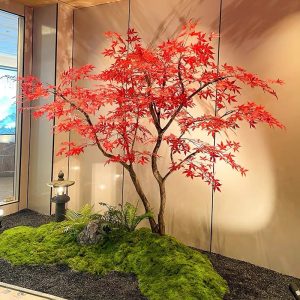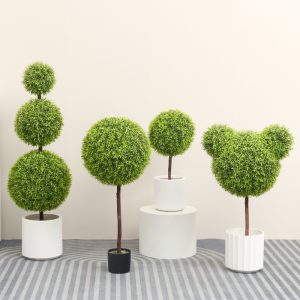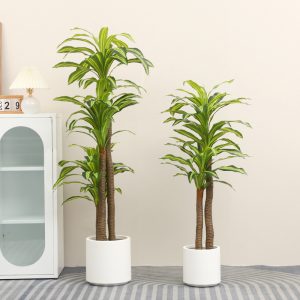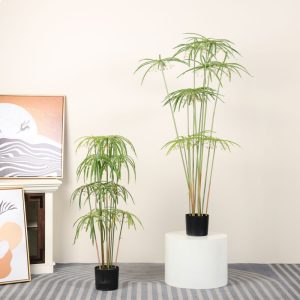On an early autumn afternoon in August 2025, inside “Olive Branch,” a Mediterranean-style restaurant in San Francisco’s Sunset District, warm golden sunlight slanted through the floor-to-ceiling windows, falling across the wicker tables in the courtyard. The air carried a mix of freshly baked focaccia bread and the fresh scent of potted rosemary. As I was straightening a tablecloth, my colleague Luna walked in with her laptop, exclaiming, “Sophie, this garden feels so cozy!”
Her gaze was drawn to a lush, leafy tree in the corner. As she approached, she reached out to touch the leaves and trunk, her face full of surprise. “Is this oak newly planted? The texture and sheen look so natural!” I smiled and handed her an iced Americano, explaining, “It’s actually a custom outdoor faux oak designed for the restaurant. The owner had tried real trees before, but California summers are too dry—leaves would yellow or fall, which not only raised maintenance costs but also affected the guest experience.”
Sunlight filtered through the leaves, casting dappled patterns across the tables and chairs. Luna followed the shadows closely, marveling at the leaf veins. “They’re almost identical to a real tree!” I squatted down to show her the base of the trunk. “Even the cracks and wood-like texture were modeled after a mature oak. On opening day, a guest even asked the owner where they bought the sapling.”
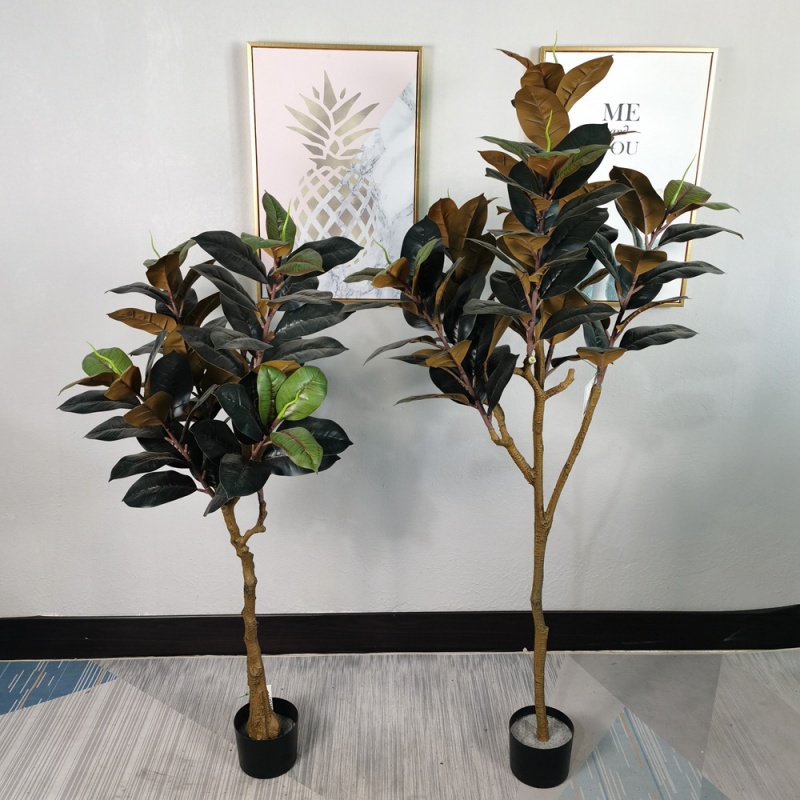
This is why the restaurant chose a garden-specific faux oak—no pruning or watering needed, unaffected by drought or storms, and lush all year round. For restaurants with frequent guests, it perfectly solves the problem of “low maintenance.”
I also showed her another example from a spa hotel: a custom faux oak by the pool, which guests couldn’t tell was fake when taking photos. The hotel manager explained that they used to replace real palms every three months, which was costly. After switching to faux trees, more than a year later, the color and shape still look fresh, saving enough money to hire two staff members.
Curious, Luna asked, “What if the garden faces north with almost no sunlight—wouldn’t it look fake?” I laughed and explained, “That’s actually an advantage. Real oaks wilt in the shade, but artificial trees aren’t limited by light. Even in dim environments, they stay lush.” Some interior designers even recommend faux oak landscaping to homeowners with north-facing properties, and the feedback is excellent.
The head chef joined in: “Real trees used to drop leaves that fell into the kitchen vents—it was hard to clean. With artificial oak trees, those problems disappeared. Guests dining under the tree feel like they’re in a countryside estate.”
Beyond practicality, they also create atmosphere. In outdoor dining scenarios at restaurants or cafés, especially in the U.S. and Europe, patrons seek a “natural enclosure” feel. The height and canopy of a faux oak provide shade and privacy without occupying as much space as a real tree.
At night, small lights on the branches glow, casting light through the leaves so that the table appears sprinkled with stars. Couples often choose to meet under the tree, and servers jokingly say it’s the “romantic corner.” In the morning, a light mist sprayed on the leaves makes the lights sparkle like dew; at noon, it becomes a natural sunshade. In autumn and winter, while real plants shed their leaves, only artificial oak trees remain green, serving as a visual focal point.
Many chain restaurants and hotel clients purchase them in bulk. They’ve found that faux oaks reduce maintenance costs while preserving long-term landscape value. In the U.S. and European markets, green landscaping is considered a “spatial asset” that can continuously generate returns.
“What clients value most, though, is durability,” I added. “The UV-resistant materials we use keep the leaves’ color stable even after five or six years under strong California sunlight, and the trunk is rot- and insect-resistant. It’s a one-time investment that lasts for many years—far more cost-effective than constantly replacing real trees.”
Luna laughed, “If I ever open a small shop, I’ll put a garden faux oak in immediately.” I smiled back, “That’s its charm—it grows no matter what, needs no maintenance, and yet maintains the vitality of a real landscape.”
As the evening breeze stirred, the branches swayed gently, as if the oak were telling the story of the seasons. For commercial clients, this oak is not only decoration—it’s a green asset that creates lasting value.








